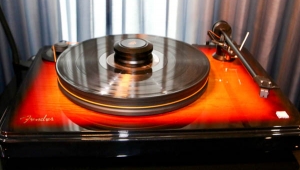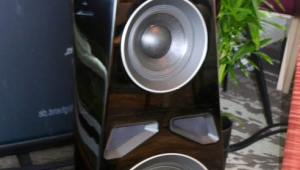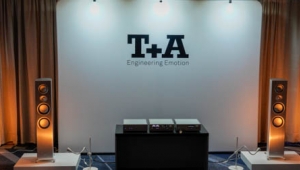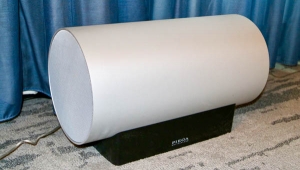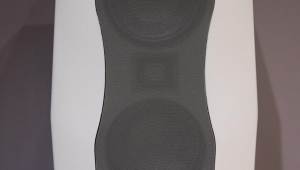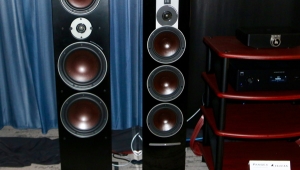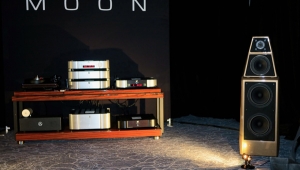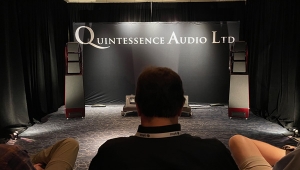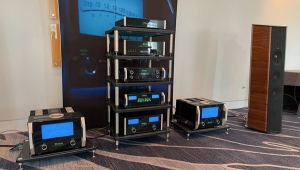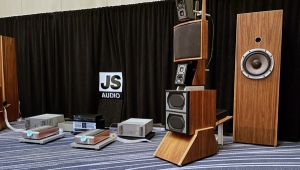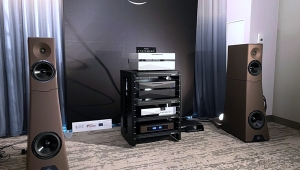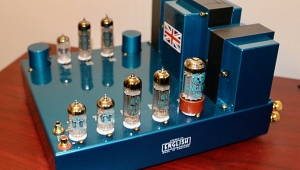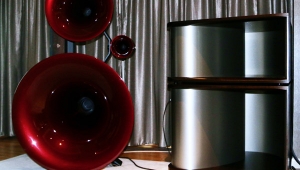| Columns Retired Columns & Blogs |
Verdant Audio: Wilson Benesch, Canor, Weiss, Antipodes, AVM, Puritan
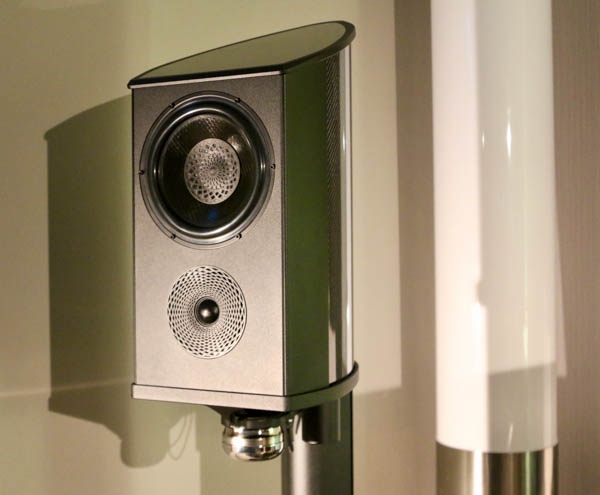
Dealer/distributor Verdant Audio's room included a few important debuts, including the new Wilson Benesch Geometry Discovery IIIZ standmount loudspeaker ($31,000). The speaker updates the English company's Geometry lineup, and it's the second model with its monocoque enclosure incorporating the recently developed A.C.T. 3Zero material, a "greener" carbon-fiber alternative that's said to be almost entirely free of petroleum products: Even the resin has been replaced by a "bio resin," Verdant Audio Founder Scott Bierfeldt told me. It's also said to require about half the amount of energy to produce than the previous regular carbon fiber monocoque.
A European collaboration of almost five years of R&D led to this new "greener" material from SSUCHY, an initialization for "Sustainable Structural & Multifunctional Biocomposites from Hybrid Natural Fibres and bio-based Polymers." According to SSUCHY's website, this material Wilson Benesch uses in these speakers is "composed of a woven hemp fabric/GreenPoxy composite … combined with a recycled PET foam as core, which makes it a green flat panel. It demonstrated better vibro-acoustic performance [than its] fossil-based counterpart at both low (< 80Hz) and high (> 6kHz) frequencies when tested at the FEMTO-ST Institute." Translation: It's well-damped.
The 2.5-way Discovery IIIZ's have fully integrated stands. The unusual-looking module on the bottom of the cabinet is WB's characteristic Isobaric Drive System bass array. Two ports, one short, one long, on either side tune the bass. On top is the company's Fibonacci tweeter, with a precisely designed geometric waveguide/cover that protects the silk-carbon hybrid dome while ensuring proper dispersion.
Wilson Benesch provided a pair of these Discovery IIIZ stand-mounts especially for AXPONA, but the official introduction will be presented at the High End Munich later this month, Bierfeldt told me.
Also new: A suite of tubed separates from Canor Audio supplied the demo system's amplification. A Canor Audio Hyperion P1 preamplifier ($12,499) handled switching and volume control duties via its tube complement of four 6922 and two 6H30PI. The P1 is equipped with nine line-level inputs and three outputs and comes in either black or silver. The P1 fed a pair of Canor Virtus M1 tubed monoblock power amplifiers ($29,999/pair), which also come in black and silver. The Virtus M1 amplifiers' four KT150 tubes per side deliver 55W in triode mode, 110W in ultralinear. You can choose to run it either with 6dB of global feedback or with none.
Also shown was an Antipodes K50 music server/player/clock ($17,500), which has two computers on board: one for rendering, the other doing server duty. Each has its own power supply, as does the reclocker. It too comes in black or silver.
Providing D/A conversion was Weiss Engineerings DAC501 D/A converter and headphone amplifier ($9645); see Stereophile's review of the very similar DAC502—although both models have just been upgraded to a v2 version incorporating the newest Sabre DAC chip and to handle four channels, according to Bierfeldt. They can be special ordered now and cost about $2000 above the current MSRP, he added.
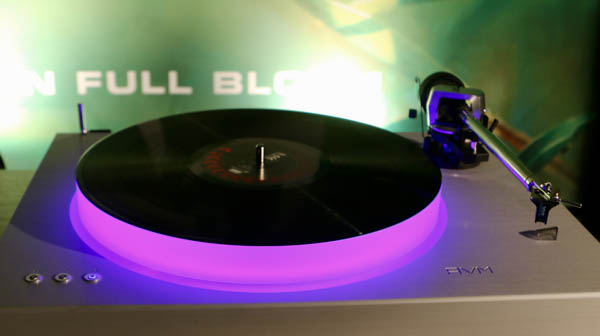
A German-made AVM Rotation R2.3 turntable, its glowing platter lit from beneath, served as the analog source; the AVM retails for $4999 for the table and tonearm; for an additional $2039, you can get an Ortofon Cadenza Blue MC cartridge, as demo'd here. Since this turntable was reportedly developed around it, that Ortofon is the "preferred cartridge." A tubed Art Audio Vinyl One Copper Reference phono stage ($7499) handled the Ortofon's low-level signals and RIAA correction. Suitable for MC and MM cartridges, the Copper Reference offers user-adjustable gain via a dial on back; in MC mode, input impedance is fixed at 100 ohms. Its class-A, phase-correct design deploys 12AX7 tubes with a 6FQ7 in the power supply. You can add a remote control for an additional $.
The demo system used Puritan Audio Laboratories power cables and a Puritan PSM1512 Studio Master Mains Purifier for power conditioning. Interconnects were Clarus Crimson, and Lateral audio stands were used.
Alas, I needed to leave for an appointment, hoping to return for more of a listen to talk about, so I didn't get to spend much time listening to this lovely system, but I do remember wanting to hear more.
- Log in or register to post comments

